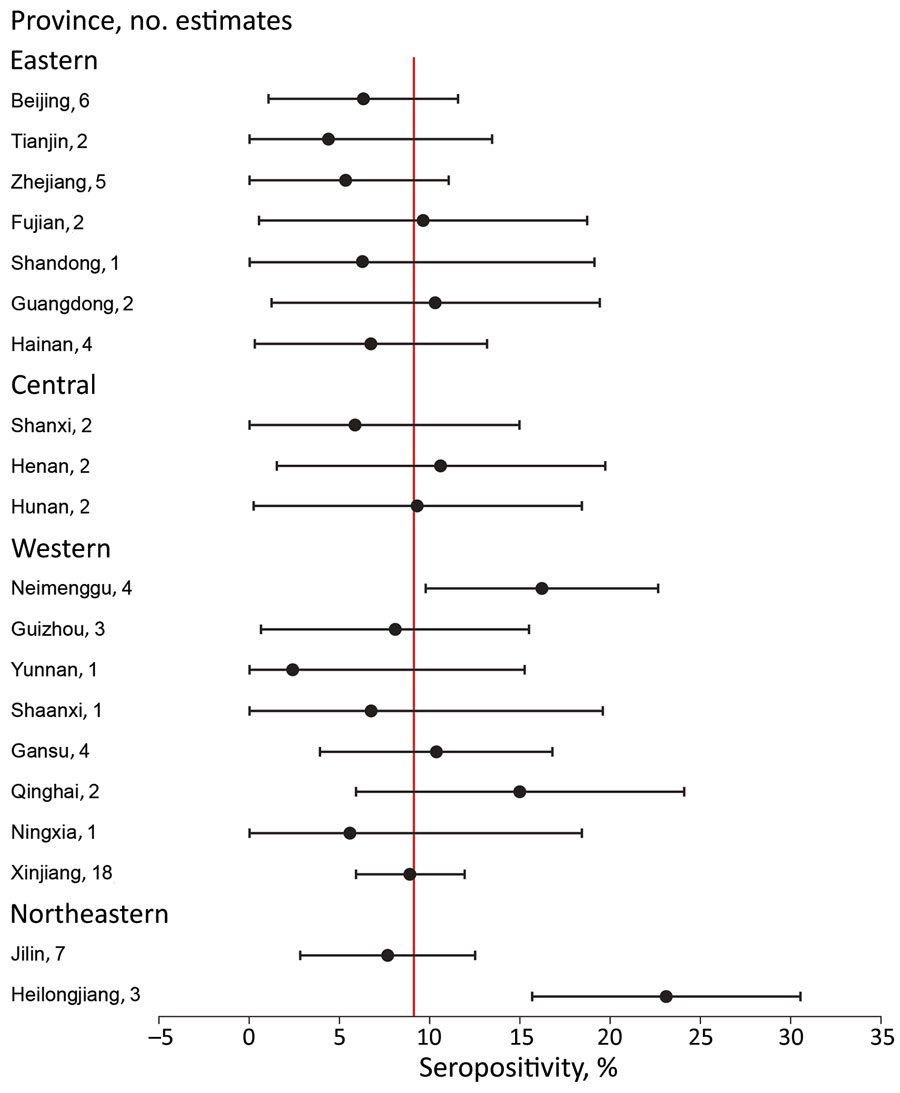Volume 28, Number 12—December 2022
Synopsis
Systematic Review and Meta-analysis of Lyme Disease Data and Seropositivity for Borrelia burgdorferi, China, 2005‒2020
Figure 2

Figure 2. Estimated seropositivity for Borrelia burgdorferi, by province, China, 2005–2020. Ixodes persulcatus ticks, among the most frequently identified ticks in China, have been found across the northeastern and select western, central and eastern provinces. I. sinensis and I. granulatus ticks are the main identified vectors in the southern and eastern regions of the country. Variations in seropositivity reflect differences in tick competency, tick bite risk, and diagnostic tests. Numbers in key are percentages. NA, not applicable.
Page created: November 01, 2022
Page updated: November 21, 2022
Page reviewed: November 21, 2022
The conclusions, findings, and opinions expressed by authors contributing to this journal do not necessarily reflect the official position of the U.S. Department of Health and Human Services, the Public Health Service, the Centers for Disease Control and Prevention, or the authors' affiliated institutions. Use of trade names is for identification only and does not imply endorsement by any of the groups named above.